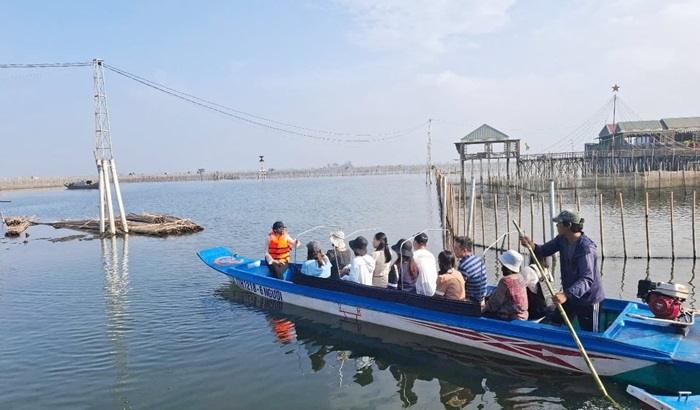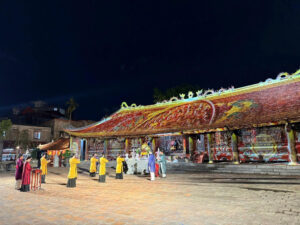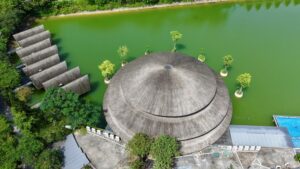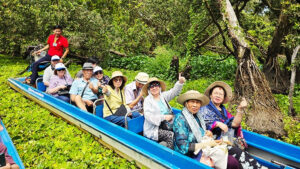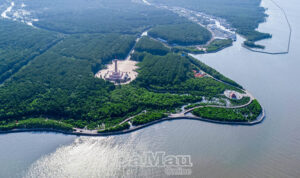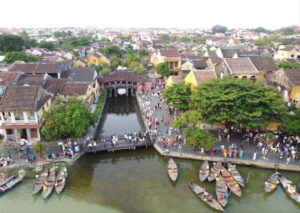Nearly 20 years ago, Dr. Nguyen Van Viet, Director of the Centre for Prehistoric Southeast Asian Studies, discovered worn movement vestiges in the south of the entrance of the Trai hamlet cave in Tan Lap commune, Lac Son district, Hoa Binh province. At that time, those vestiges, dating back 8,000 - 9,000 years, were 60 - 70cm underground and almost intact.
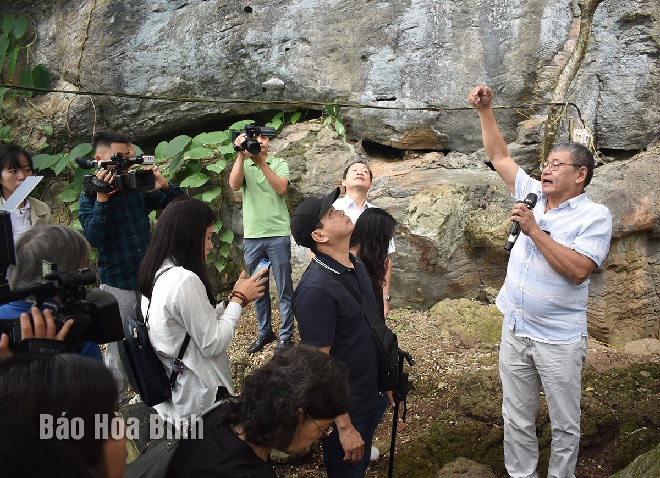
Dr. Nguyen Van Viet, Director of the Centre for Prehistoric Southeast Asian Studies, talks to the media about new discoveries of the Hoa Binh Civilisation at the Trai hamlet cave.
Trai hamlet is located in the former Muong Vang area, which is now the communes of Quy Hoa, Tan Lap, and Nhan Nghia. The Trai hamlet cave is situated in a vast valley where wet rice is cultivated and limestone mountains surround.
Notably, many vestiges of primitive humans have been found here. In 1980, during a fact-finding trip to prepare for map drawing, a geological team discovered many traces of the primitive civilisation at the cave and collected 108 stone objects and some animal bone pieces.
The elderly residing in the centre of the Muong Vang area said Trai hamlet used to be a thick forest where primitive humans survived on foraging nuts and hunting wild animals.
Six deep and large worn vestiges were discovered in the Hoa Binh Civilisation layer. Compared to previously found vestiges, they were more worn, indicating that this cave used to be a living place of primitive humans.
Inside the Trai hamlet cave, apart from stone, bone, horn and ceramic objects, archaeologists also collected a relatively large number of mollusc shell and plant traces. The rice grains and husks discovered in the Hoa Binh Civilisation layer there could be material evidence of the early-stage wet rice cultivation during the civilisation.
In particular, scientists also found a grave in a stratum dating back more than 17,000 years, along with some stoves. At present, archaeologists haven’t been able to completely decode all the mysteries kept at the Trai hamlet cave.
In late 2014, Viet, one of the founders of a club of friends of those loving the Hoa Binh civilisation, called for donations from the philanthropists wishing to preserve national heritage to help address rockslides and repair a pagoda damaged by fallen rocks with the hope that this place will become one of the destinations for people interested in this civilisation.
Coming here, visitors can learn more about the life of primitive humans of the Hoa Binh civilisation. They can also gain an insight into the culture of the Muong ethnic group and enjoy the beautiful landscape of the Muong Vang valley, one of the four large Muong ethnic areas in Hoa Binh province.


